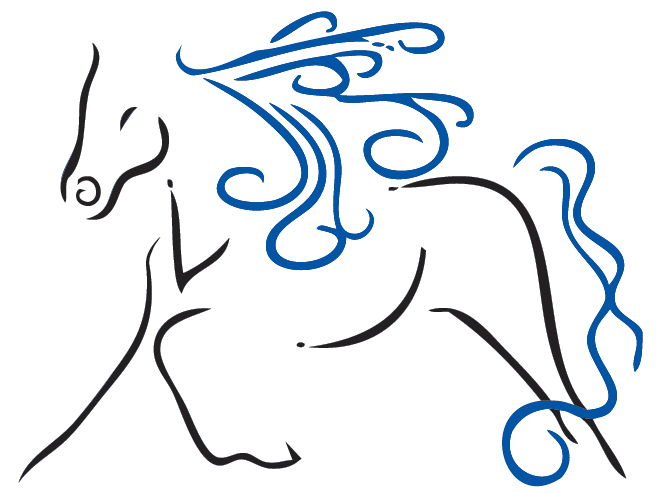Progress Vs Perfection
Recently I was working with one of my clients who is very hands-on and also wants to learn how to help her lovely mare in-between sessions. And some questions she posed gave me the idea to write this blog.
This particular client had already been using massage and stretching to help her horse. So she was comfortable in learning new techniques and we also amended what she was doing up to now.
Not all bodywork techniques are appropriate at all times. Most horse owners really do want to do right by their equine partners. And there is so much information out there, everybody touting a program for the equine athlete. But let's face it, finding what your horse really needs can sometimes be overwhelming.
Let's take the idea of stretching. Most of us think that this should be really helpful to our horse. Increasing the range of motion, becoming more supple, preventing injuries. We hear it not only in the equine industry but also in personal fitness programs and certainly at the gym.
But what I see in reality is stretching being done before a ride when the body is "cold", stiff and not in any condition for this type of approach. I see people REALLY stretching, and actually pulling their horse's limbs without listening to the body and the valuable feedback it provides - subtle and not so subtle. Most horses brace against it. More harm than good can result by improperly stretching your horse.
I much prefer an approach where we not only work with the soft tissue in a way so it can lengthen incrementally over time, but that our way of doing it also involves the nervous system. And this may take quite a bit of time and patience because we not only want to lengthen the tissue but also create new patterns of movement and being. We want to create movement and space so energy can flow where it was previously blocked.
“Movement is the Essence of Life.”
So what does all of this have to do with progress? As I was showing my client how to help her horse with pelvic and front limb function, I showed her how to work with her mare's body and building on the little movement the mare was capable of at that particular point in time. I also showed her the difference if I went way beyond it and how the body braced and created more tension. By staying under the bracing response, she could see how we made progress, even though it was only tiny.
By building on what the horse can offer easily, we can re-educate the body, specifically the somatic/nervous system response. We basically rewire the body!
The idea for this blog came from my client asking: So how far should she be able to go? Will she be able to "XYZ" and when? She already had the end point in mind, locking onto the picture in her head of where she wanted her mare to ultimately end up. I know this well, we all do it, me included. We are so vested in the ultimate outcome, it takes a third party to remind us to stay in the moment. Sometimes it's our horse, sometimes it's a person. Staying in the moment, where our horse lives, right here, and paying close attention so we can facilitate the possibility of movement and fluidity without undue stress to the body system. Being clear of our intention to IMPROVE what is right in front of us.
“Too much action with too little intent makes for wasteful exertion of energy and the confusion between movement and progress.”
Horse Yoga with one of my client's horses - see how relaxed the right hindleg is - there is no force being used here to place the foot!
Above you see the range of motion for the right hindleg. Now take a look below and see the difference in the left hind. Quite a bit, right?
And the same move for the left hindleg. Yes, there is a lot of difference!
Now, I could have easily have moved the left hindfoot more underneath the body. But the horse could not have held the position for long, creating more brace and tension in the body. The placement is data for me, connecting the dots with the other information I gathered with my hands and feel. By placing the foot here and keeping the horse relaxed, the body can now let go within the pelvic structure. Over time, the range of motion in the left hindleg will increase and more closely match what we see in the right hindleg.
“We are all glorified motion sensors. Some things only become visible to us when they undergo change.”
Reading the subtle clues our horses provide us requires us to stay in the moment. While it is helpful to have goals to strive towards, focusing too much on them can really blind us to what our horses need right now. Progress is rarely linear, just like life. Sometimes we make great strides, other times we seem to stall and plateau. When I hit those seemingly stagnant spots, I try to become still. Really still. Because life is never stagnant. It moves. We sometimes are just too busy to notice and pay attention to the quiet whisperings. The clue to slow down, or to change direction.
Progress sometimes also requires us to back track or detour. We may need a different perspective or even view point. Choosing to experience them without resistance is key. But your horse will thank you for it.
I hope you are enjoying the little signs that spring is coming. Just a couple days ago we had sunshine, rain and snow all within a couple hours. But spring is marching ahead, no matter what we see. Life reminds us continuously to pay attention by becoming still.
May you listen not only intently but also deeply.
Daniela




